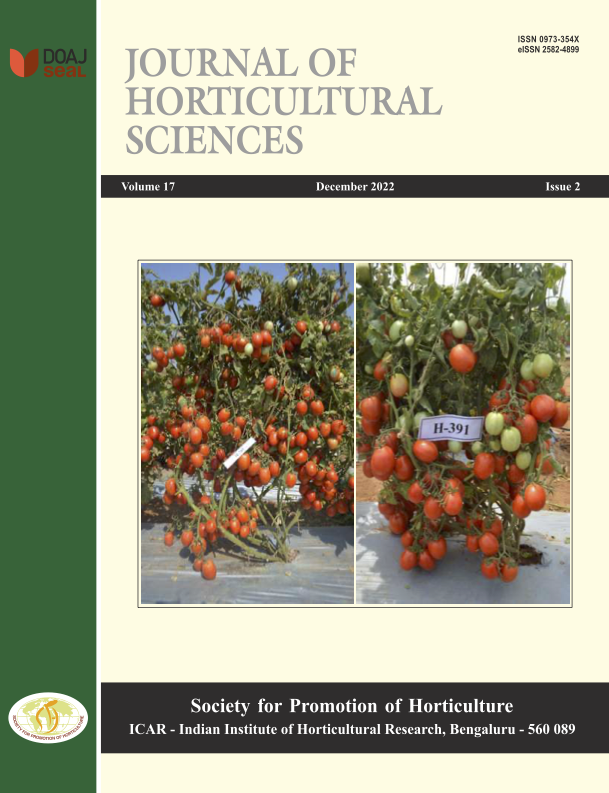Optimization of freeze drying parameters for moringa (Moringa oleifera) flower powder by using response surface methodology and principal component analysis
DOI:
https://doi.org/10.24154/jhs.v17i2.1481Keywords:
Dehydration, Freeze drying, moringa flower, nutraceutical, response surface methodology.Abstract
Moringa oleifera Lam. is an incredible plant because of vital nutrients such as minerals, vitamins and phytochemicals. The present work is focused on studying the optimization and quality attributes retention in moringa flowers in a freeze dryer (FD). Because the conventional drying process takes more time and energy which will affect the product quality and safety. Response surface methodology (RSM) was employed to optimize the effect of drying temperature (- 65 to - 45°C), vacuum pressure (0.5 to 2.5 mmHg) and drying time (18 to 24 h.) on the vitamin C, total antioxidant activity(TAA) and hygroscopicity (HS) of moringa flower. The developed model response R2 values of vitamin C 0.96, total antioxidant activity 0.97 and hygroscopicity0.95. Based on response surface and desirability (0.74) functions, moringa flower was freeze sdried at - 63.75°C for18 hr under 0.55 vacuum pressure had an optimum level of vitamin C 285.84 mg/100g, TAA 453.20 mg/100g and HS 1.57 percent. Freeze dried moringa flower powder at -55°C had maximum drying characteristics with special reference to high powder recovery (98.75%) and excellent flowability.The first principal component, accounting for 52.15 per cent and two 23.02 per cent of the total variance resolved the different drying temperatures.
Downloads
Downloads
Published
Issue
Section
License
Copyright (c) 2022 Pandidurai G, Amutha S, Kanchana S, Vellaikumar S, Prabhakaran K

This work is licensed under a Creative Commons Attribution-NonCommercial-ShareAlike 4.0 International License.
Authors retain copyright. Articles published are made available as open access articles, distributed under the terms of the Creative Commons Attribution-NonCommercial-ShareAlike 4.0 International License, which permits unrestricted non-commercial use, distribution, and reproduction in any medium, provided the original author and source are credited. 
This journal permits and encourages authors to share their submitted versions (preprints), accepted versions (postprints) and/or published versions (publisher versions) freely under the CC BY-NC-SA 4.0 license while providing bibliographic details that credit, if applicable.





 .
. 











